And, in Granada, the capital of Lorca's
Andalusia, a china is a small stone used in paving streets. Context
left us with the most obvious, the Chinese man (or Chinaman,
with all the negative connotations the word carries from Spanish
into English), but the other meanings were important in our thinking because they were meanings we knew Lorca knew.
In collaborating, we also found it critical not only to check
each other for accuracy but for liberty-when one of its chose to
experiment with Lorca, to go over the top, as it were, usually when
it seemed there was no other alternative, the other was there to
question the experiment. Was this really Lorca? Was this beyond
meaning and new interpretation? If interpretation, was it legitimate and necessary interpretation? The presence of the collaborator thus gave its each greater confidence to experiment, to play;
in fact, to discover different, and often better ways to write Lorca
into English.
This last part of our working method also made it clear how
important being poets ourselves was to this particular task of translation. Moving through drafts, thinking out questions of Lorca and
his project, led us to secondary and significant ways to solve translation issues. After wondering what Lorca was trying to do, the later
phases of our work continued to have the wondering of translators but it added the wondering of poets. For both of us a new and
useful question became not simply what was Lorca doing but what
would each of us, as a poet, do? How would we address the poetic
problems Lorca presented? This part of the collaboration left both
of us feeling some trepidation because it meant that the Medina/
Statman collaboration had become the making finally of something that Lorca did not actually write. Doing this we found ourselves playing with Lorca's forms, with his repetitions, his
arrangements of sequence and line. At times we found the need
to make the poems leaner than the original, with less of Lorca's
overwhelming language and cadences in Spanish. All this play,
this erasure, has seemed necessary to retain the feeling, the power,
the music of Lorca's work.
This was obviously one of the more creative and sensitive
parts of the collaboration. Here were two poets translating, writing, re-writing a poem, a book of poems, an activity that, to cite
Robert Lowell, in some way functions as an imitation of another
poet. Here were two poets translating, writing, rewriting a book of
poems that, to cite Gregory Rabassa, will become the version for
numerous (we hope) other readers. In giving ourselves leave to
be more than a combination dictionary/grammar/usage text, we
demanded of ourselves a great deal of humility and a bit of hubris, demanded the necessity of allowing the poetic ego to work
and the necessity to also say no to that very ego. Because, in thinking about how I as a poet or how we as poets would do this, we
were also responsible for remembering that often that very question, the one framed by the I or the we, while satisfying to think
about, may also be irrelevant to the poem we were translating. As
such, translating Lorca, arguably the greatest Spanish poet of the twentieth century, and Poet in New York, arguably his greatest book
of poems, has required reverence and irreverence, caution and
wildness, timidity and chutzpah.
To read Poet in New York in the version we offer here is to read
not prophecy but chronicle, not the future but the present. We
have lost the New York City of September 10, 2001. What we
gained is a New York in some ways wiser, sadder, and perhaps
better able to deal with both triumph and tragedy. We cannot
quantify grief, nor can we quantify hope. They are not found in
mourning prayers or in hate, not in the call to arms or in prejudice, not in money or fast cars or the most glittering jewels or the
tallest buildings or the smartest books. These are ancient lessons
Lorca learned well in New York, and we, lulled into complacency
by our collective wealth, forgot and relearned in a nightmare of
fire and ash. To read this book now is to see Lorca's eyes-eyes of
a child-staring from the anonymous grave into which he was
thrown after his murder and to hear the black sounds of duende
carried by the Spanish breeze above our buildings and streets to a
place where true grief and hope, twin sisters, reside.
Poeta en Nueva York / Poet in New York
A BEBE Y CARLOS MORLA
Los poemas de este libro estdn escritos en la ciudad de Nueva
York el ano 1929-1930, en que el poeta vivio como estudiante en
Columbia University.
F.G.L.
TO BEBE AND CARLOS MORLA
The poems of this book were written in the city of New York during
the year 1929-1930, in which the poet lived as a student at
Columbia University.
F.G.L.
I
Poemas de la soledad
en Columbia University
Furia color de amor,
amor color de olvido.
-Luis Cernuda
I
Poems of Solitude
at Columbia University
Fury, the color of love,
love, the color of forgetting.
-Luis Cernuda
VUELTA DE PASEO





BACK FROM A WALK





1910
(Intermedio)





New York, agosto 1929
1910
(Interlude)





New York, August 1929
FABULA Y RUEDA DE LOS TRES AMIGOS






FABLE AND ROUND OF THE THREE FRIENDS











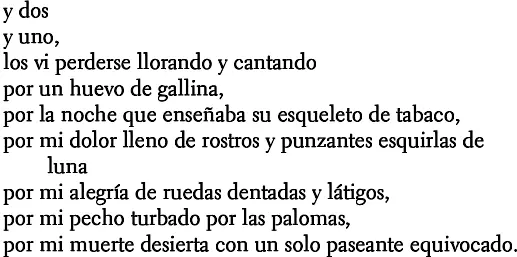



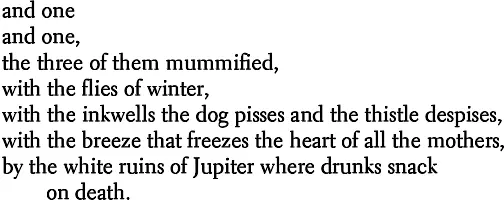

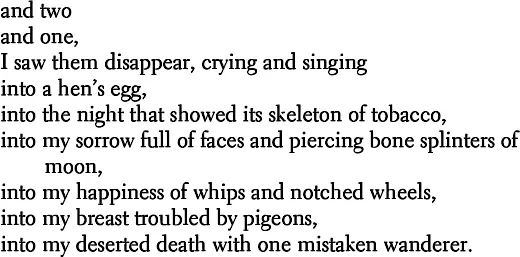
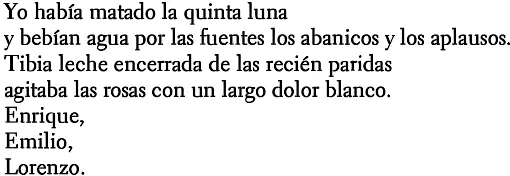




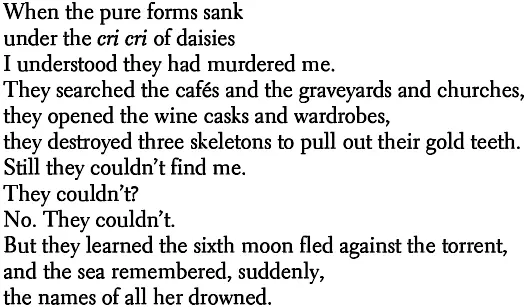
TU INFANCIA EN MENTON
Si, to ninez ya fabula de fuentes.
-Jorge Guillen
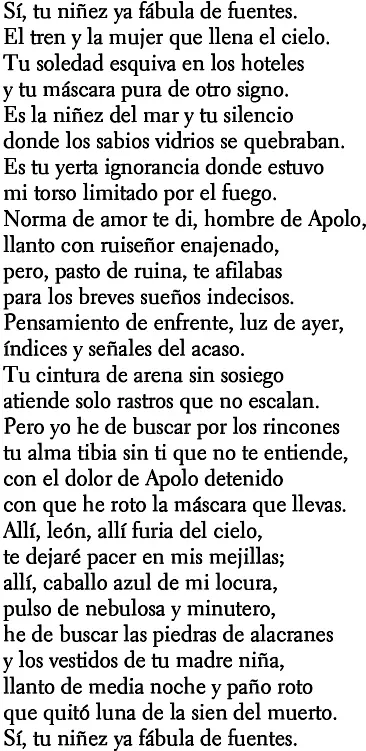
YOUR INFANCY IN MENTON
Yes, your childhood now a fable of fountains.
-Jorge Guillen
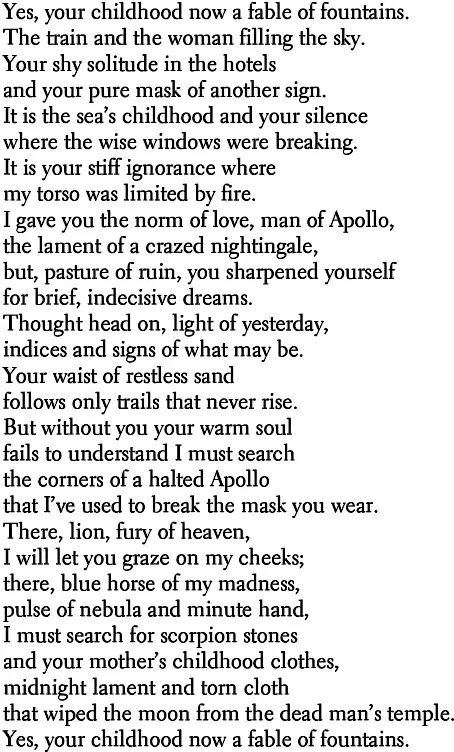
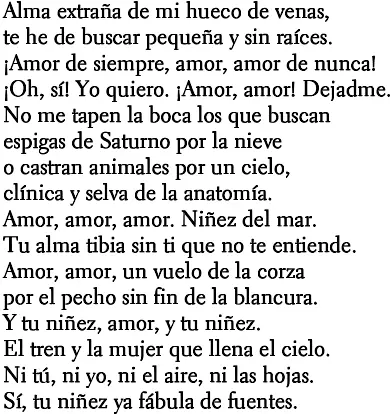
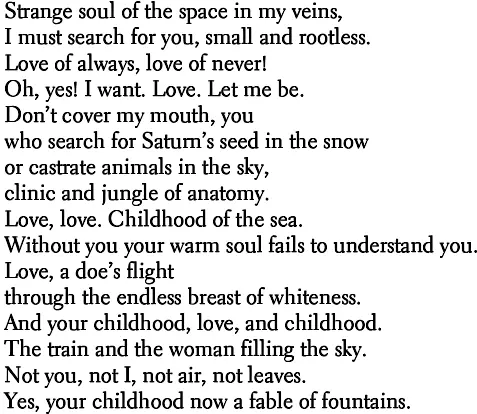
II
Los Negros
Para Angel del Rio
II
The Blacks
For Angel del Rio
NORMA Y PARAISO DE LOS NEGROS






NORM AND PARADISE OF THE BLACKS








EL REY DE HARLEM



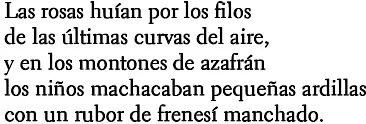
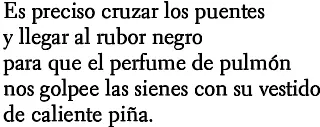

THE KING OF HARLEM



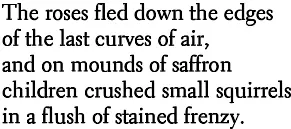
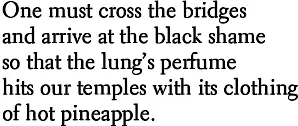






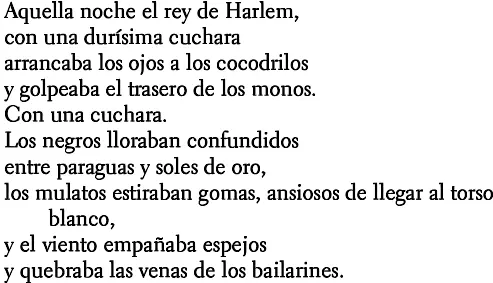






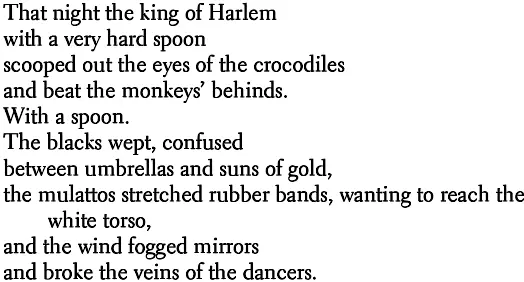


















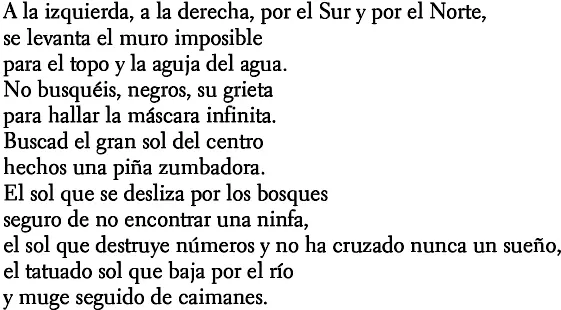





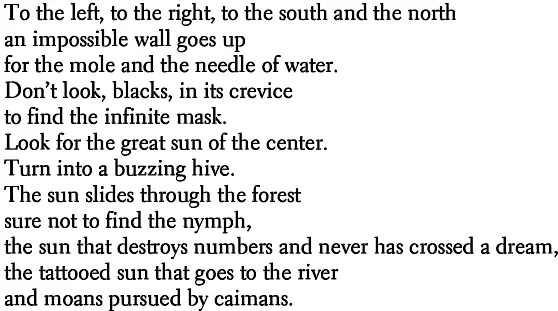





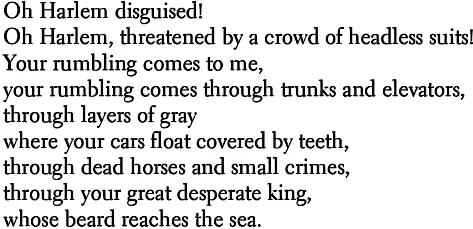
IGLESIA ABANDONADA
(Balada de la Gran Guerra)

ABANDONED CHURCH
(Ballad of the Great War)

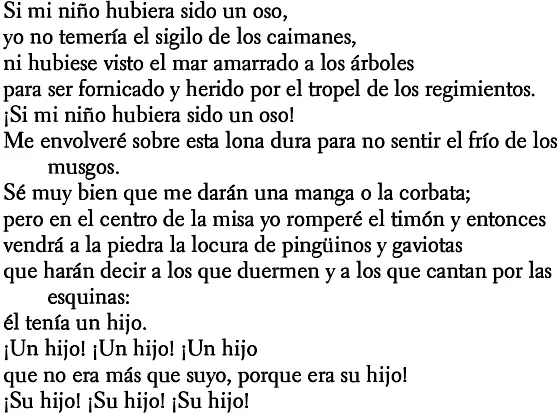
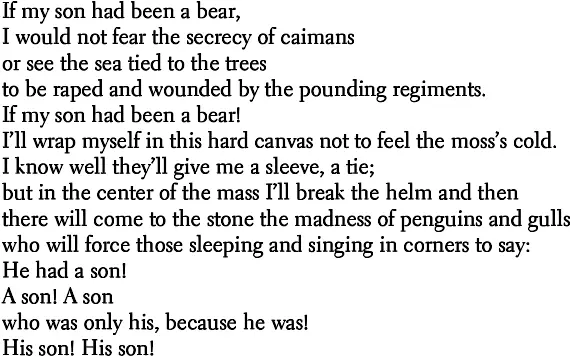
III
Calles y suenos
A Rafael R. Raptin
Un pdjaro de papel en el pecho
dice que el tiempo de los besos no ha llegado.
-Vicente Aleixandre
III
Streets and Dreams
To Rafael R. Radon
A paper bird in the breast
says the time of kisses has not arrived.
-Vicente Aleixandre
DANZA DE LA MUERTE








DANCE OF DEATH










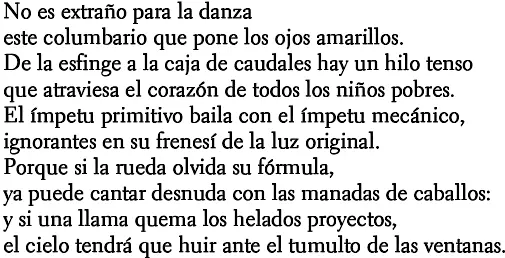





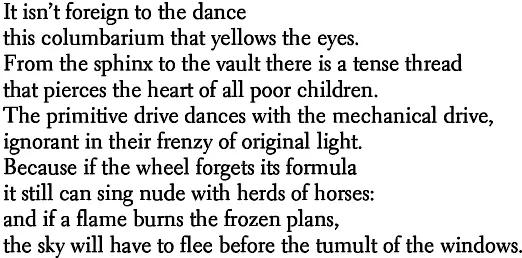






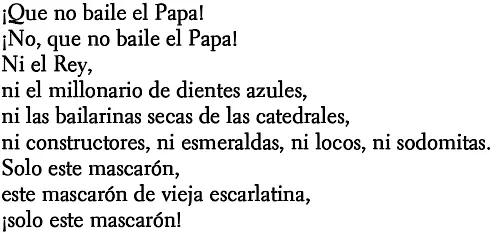



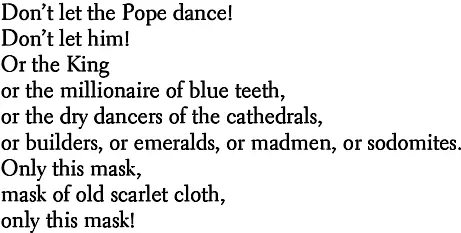


Diciembre 1929


December 1929
PAISAJE DE LA MULTITUD QUE VOMITA
(Anochecer de Coney Island)
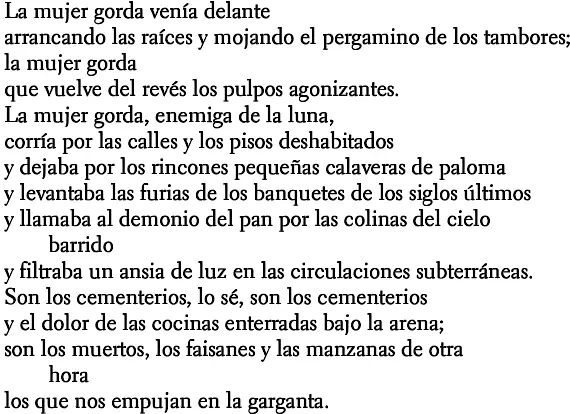
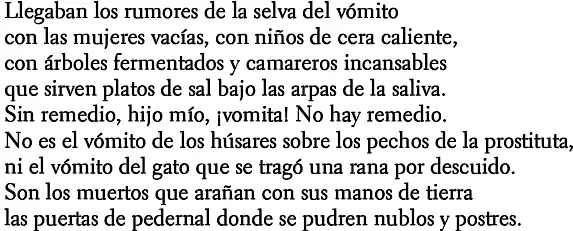

LANDSCAPE OF THE VOMITING CROWD
(Twilight at Coney Island)



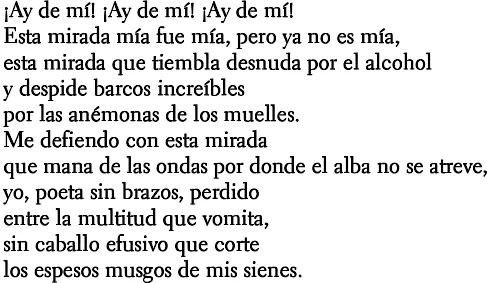

New York, 29 de diciembre de 1929.
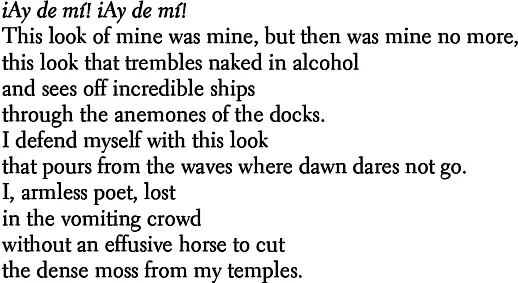

New York, December 29, 1929
PAISAJE DE LA MULTITUD QUE ORINA
(Nocturno de Battery Place)
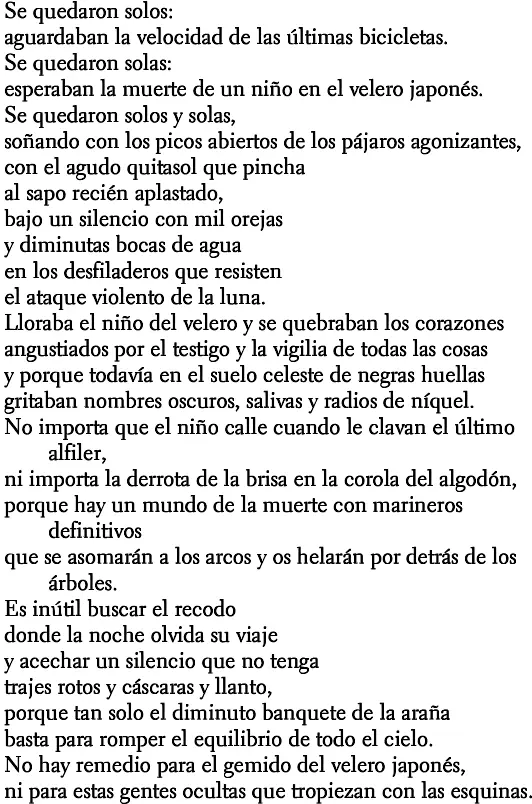
LANDSCAPE OF THE URINATING CROWD
(Nocturne of Battery Place)


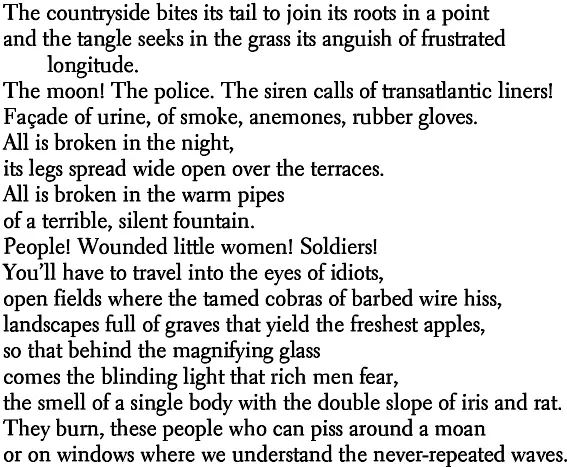
ASESINATO
(Dos voces de madrugada en Riverside Drive)
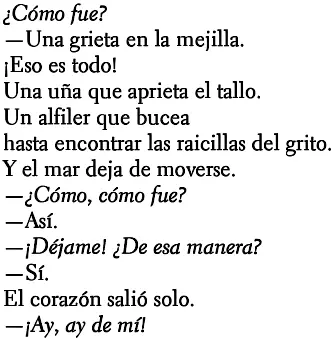
MURDER
(Two voices at dawn on Riverside Drive)

NAVIDAD EN EL HUDSON




CHRISTMAS ON THE HUDSON
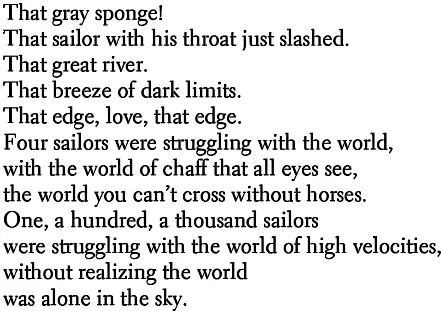




New York, 27 de diciembre de 1929
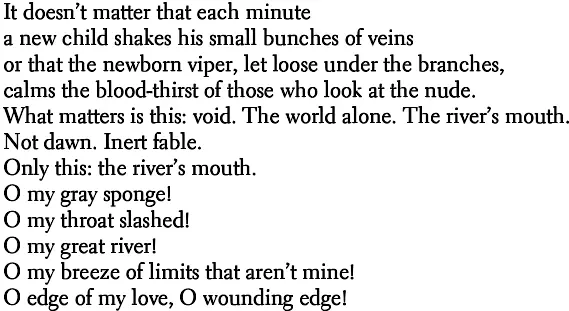
New York, December 27, 1929
CIUDAD SIN SUENO
(Nocturno del Brooklyn Bridge)


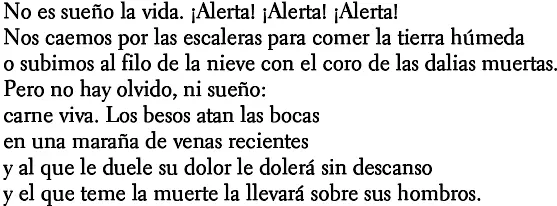

CITY WITHOUT SLEEP
(Nocturne of the Brooklyn Bridge)

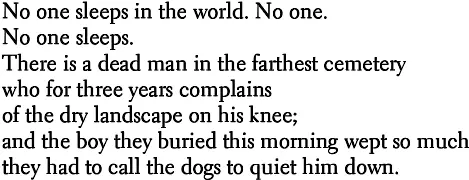


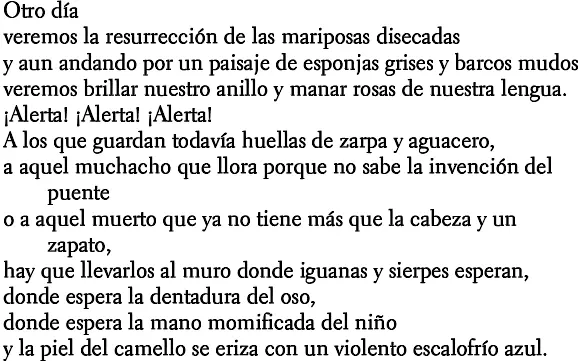





PANORAMA CIEGO DE NUEVA YORK
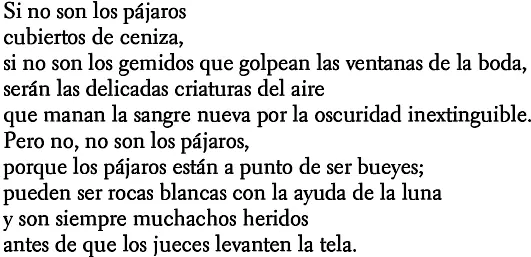
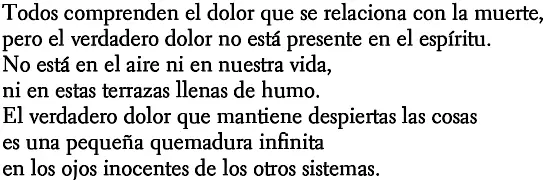
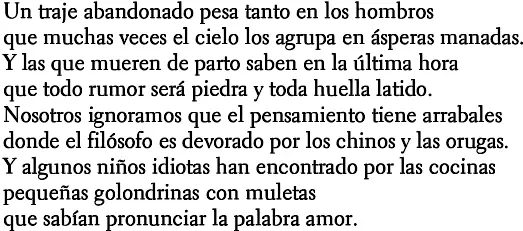

BLIND PANORAMA OF NEW YORK
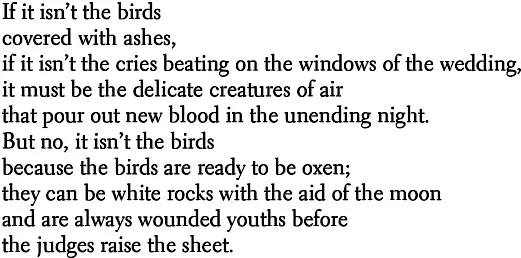
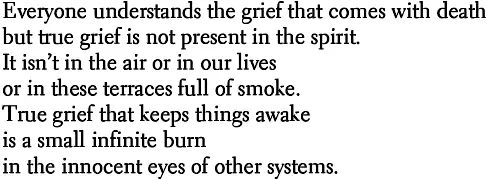
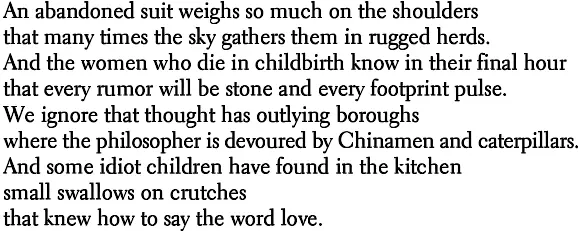

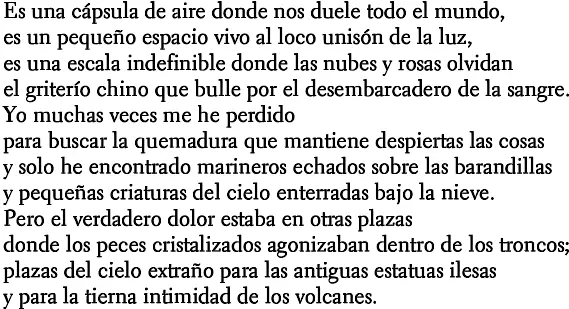



NACIMIENTO DE CRISTO





BIRTH OF CHRIST





LA AURORA

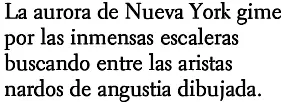



DAWN

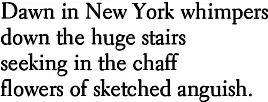



IV
Poemas del lago Eden Mills
A Eduardo Ugarte
IV
Poems of Lake Eden Mills
To Eduardo Ugarte
POEMA DOBLE DEL LAGO EDEN
Nuestro ganado pace, el viento espira.
-Garcilaso



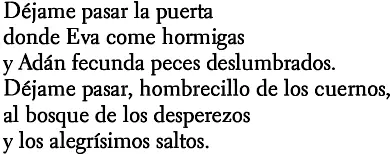

DOUBLE POEM OF LAKE EDEN
Our cattle graze, the wind exhales.
-Garcilaso



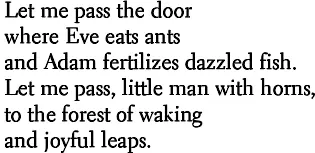













CIELO VIVO






LIVING SKY

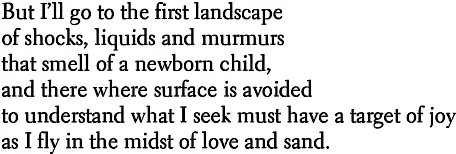





Eden Mills, Vermont, 24 agosto 1929

Eden Mills, Vermont
August 24, 1929
V
En la cabana del Farmer
(Campo de Newburg)
A Concha Mendez y Manuel Altolaguirre
V
In the Farmer's Cabin
(Newburgh Countryside)
To Concha Mendez and Manuel Altolaguirre
EL NINO STANTON


THE BOY STANTON


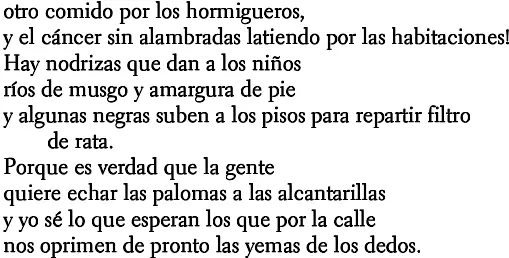
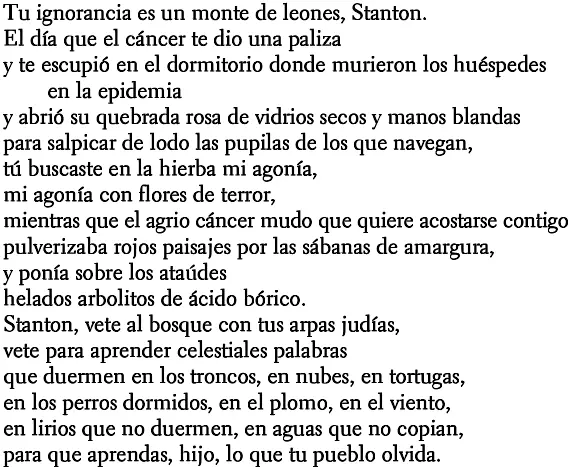

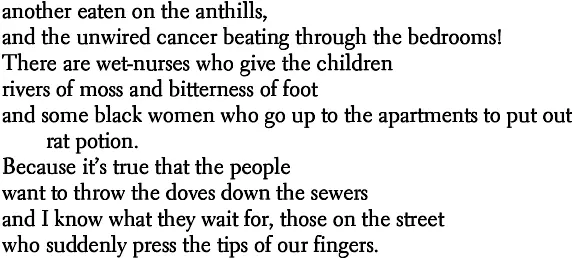
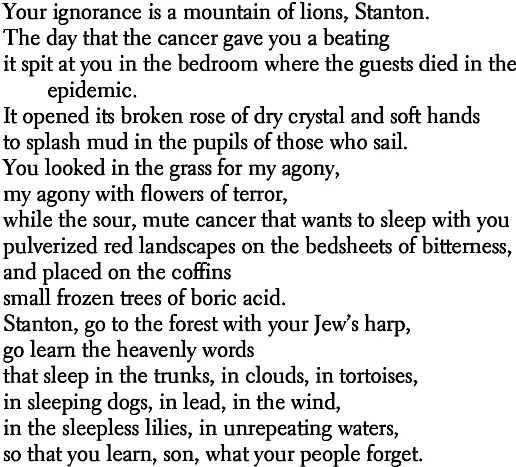



VACA
A Luis Lacasa







COW
To Luis Lacasa







NINA AHOGADA EN EL POZO
(Granada y Newburg)







GIRL DROWNED IN THE WELL
(Granada and Newburgh)













VI
Introduccion a la muerte
Poemas de la soledad en Vermont
Para Rafael Sanchez Ventura
VI
Introduction to Death
Poems of Solitude in Vermont
For Rafael Sanchez Ventura
MUERTE
A Luis de la Serna
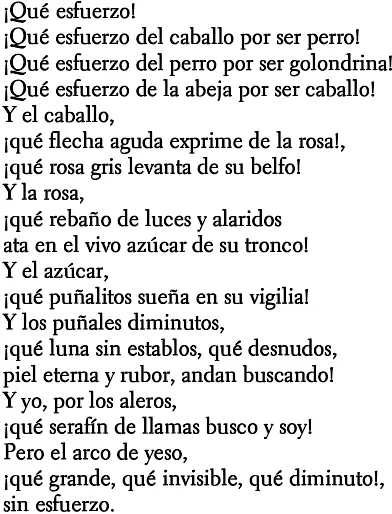
DEATH
For Luis de la Serna

NOCTURNO DEL HUECO
1.
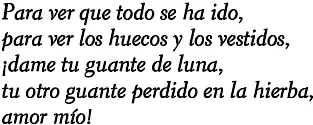





NOCTURNE OF THE HOLE
1.
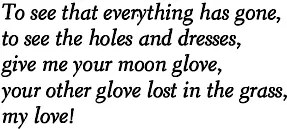



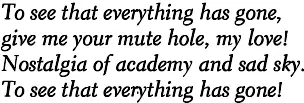


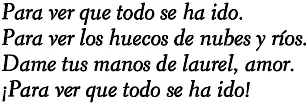




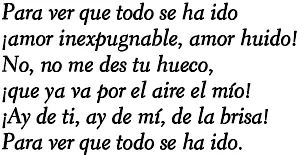






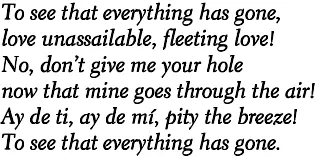
II.







It







PAISAJE CON DOS TUMBAS Y UN PERRO ASIRIO
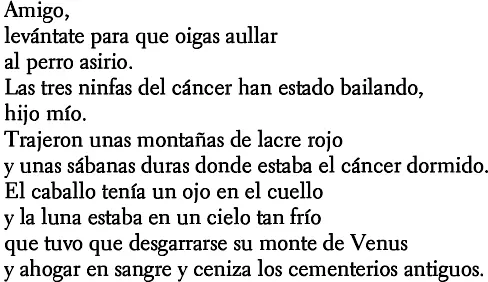



LANDSCAPE WITH TWO TOMBS AND AN ASSYRIAN DOG




RUINA
A Regino Sainz de la Maza








RUIN
To Regino Sainz de la Maza












LUNA Y PANORAMA DE LOS INSECTOS
(Poema de amor)
La luna en el rear riela,
en la Iona gime el viento
y alza en blando movimiento
olas de Plata y azul.
- Espronceda


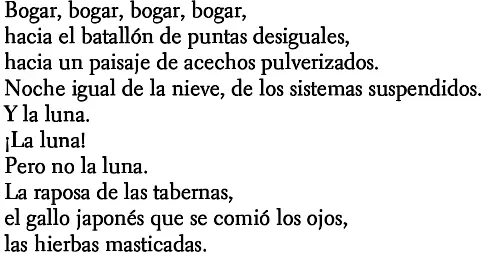
MOON AND PANORAMA OF THE INSECTS
(Love Poem)
On the ocean the moon shimmers,
on the canvas the wind moans
and lifts in slow modulation
waves of silver and blue.
- Espronceda


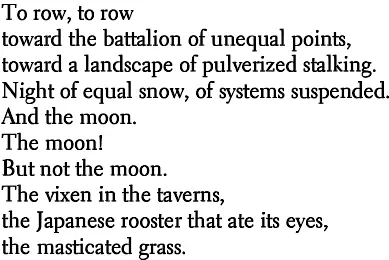

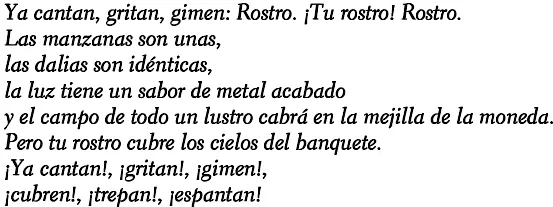
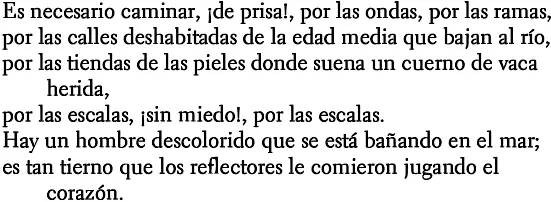
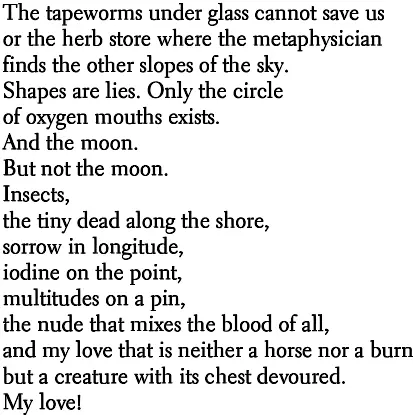
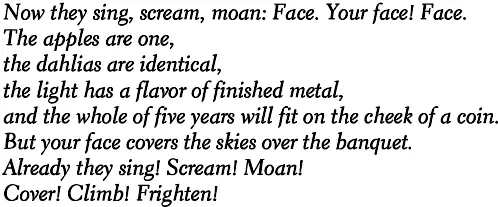
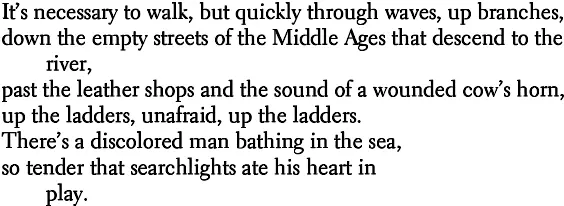



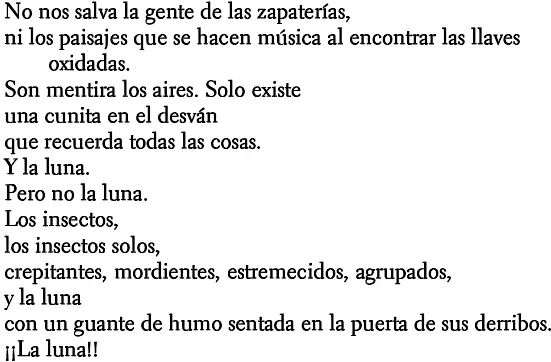
New York, 4 de enero de 1930

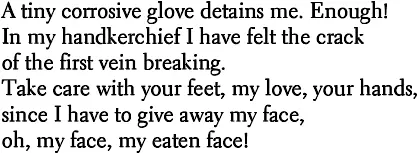


New York, January 4, 1930
VII
Vuelta a la ciudad
Para Antonio Hernandez Soriano
VII
Return to the City
For Antonio Hernandez Soriano
NEW YORK
Oficina y Denttncia
A Fernando Vela
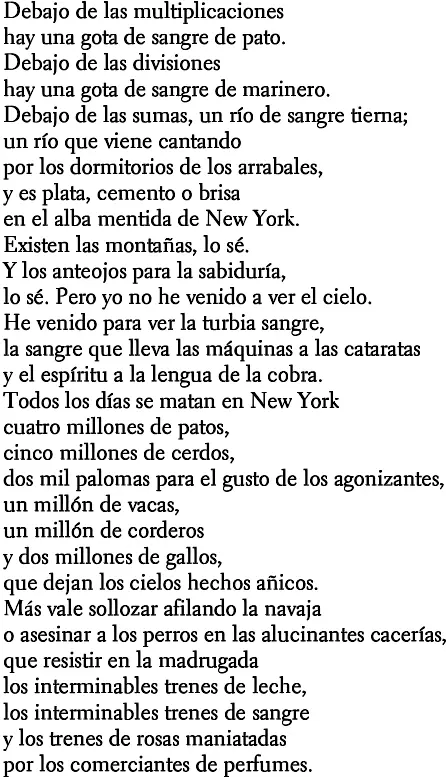
NEW YORK
Office and Denunciation
To Fernando Vela
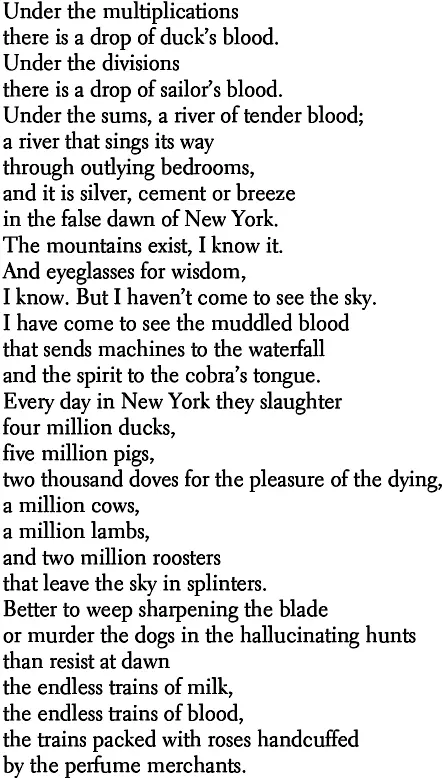
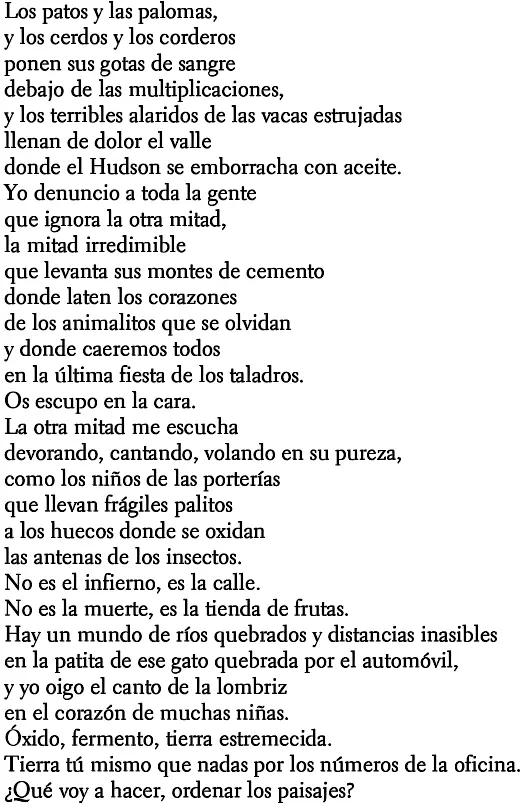
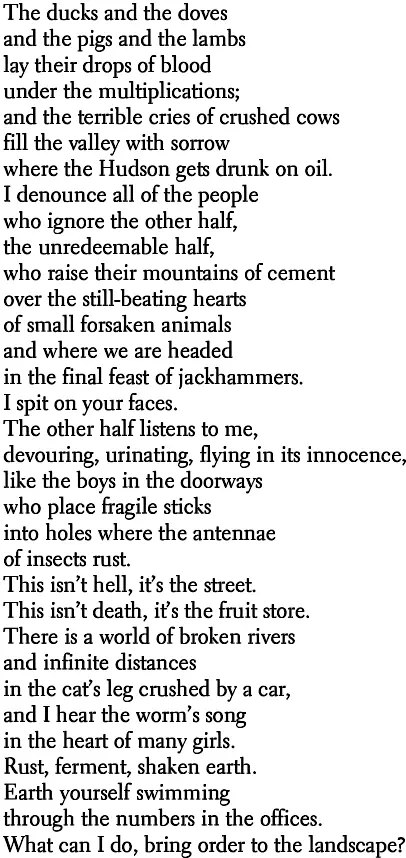

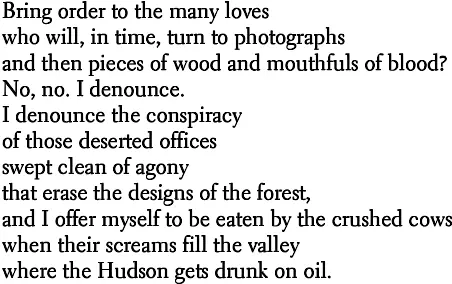
CEMENTERIO JUDIO






JEWISH CEMETERY

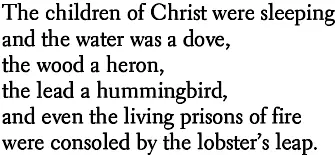





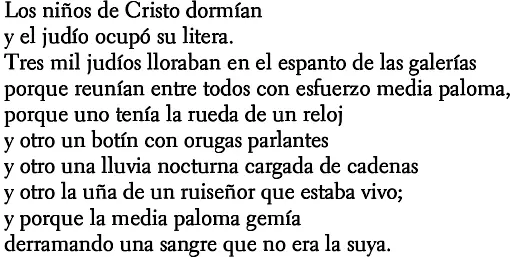

New York, 18 de enero de 1930

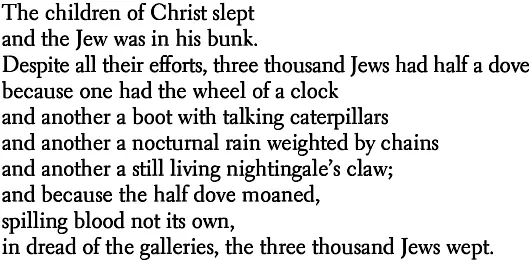
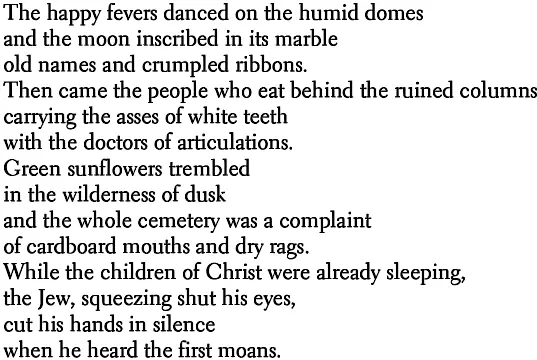
New York, January i8, 1930
PEQUENO POEMA INFINITO
Para Luis Cardoza y Aragon

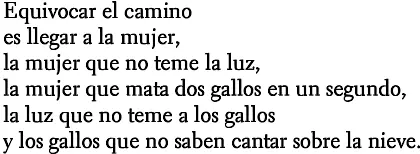



SMALL INFINITE POEM
For Luis Cardoza y Aragon

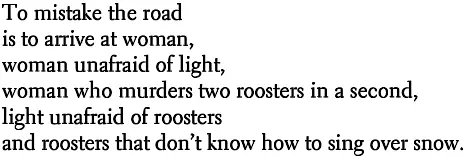




New York, io de enero de 1930

New York, January io, 1930
CRUCIFIXION

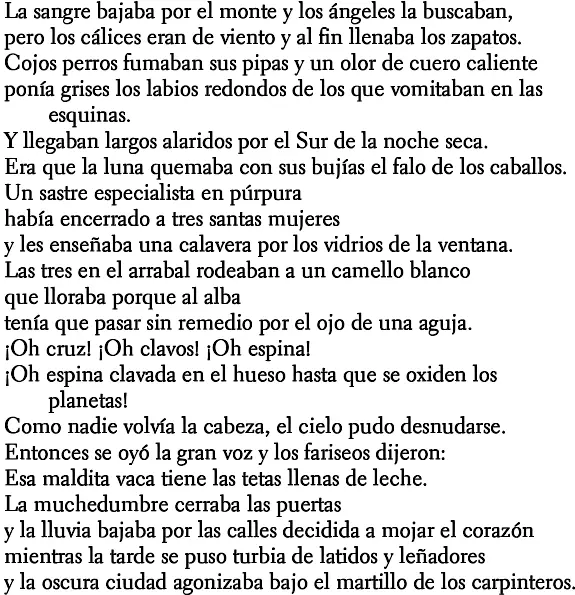
CRUCIFIXION

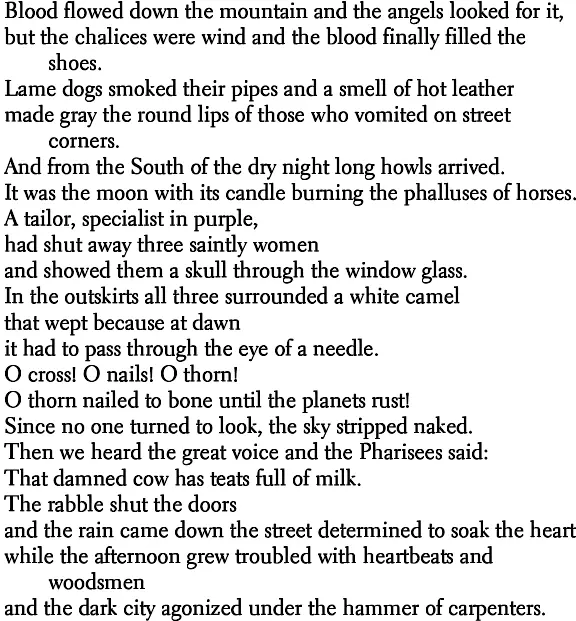
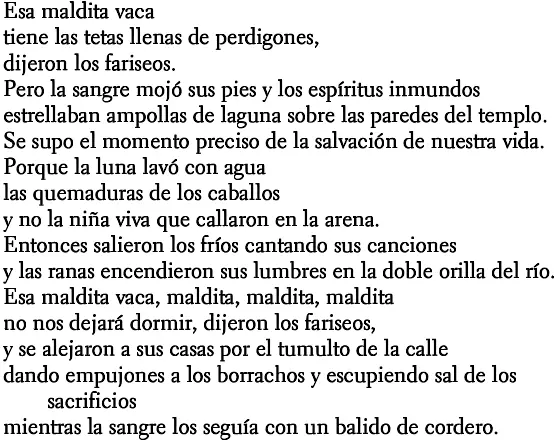

New York, i8 de octubre de 1929
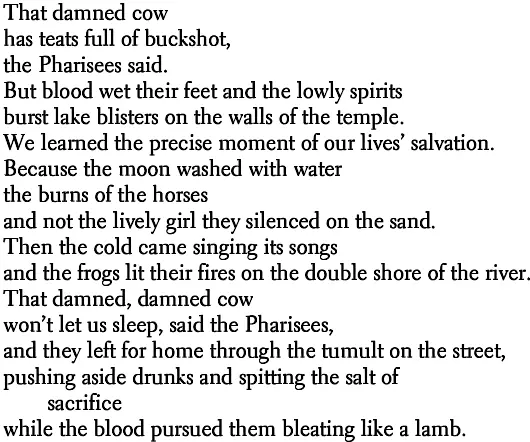

New York, October i8, 1929
VIII
Dos odas
A mi editor, Armando Guibert
VIII
Two Odes
To my editor, Armando Guibert
GRITO HACIA ROMA
(desde la torre del Chrysler Building)


CRY TOWARD ROME
(From the Tower of the Chrysler Building)
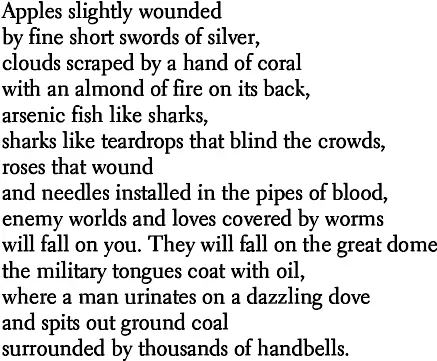
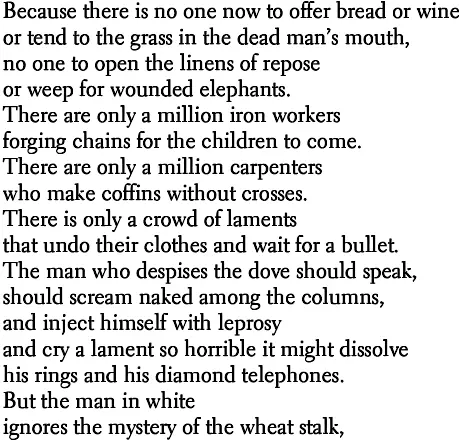







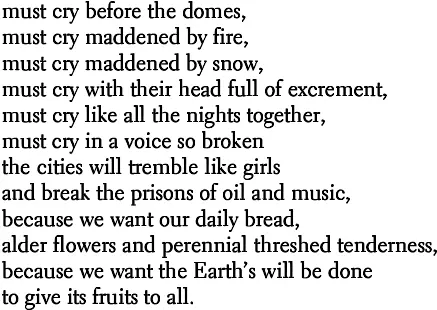
ODA A WALT WHITMAN



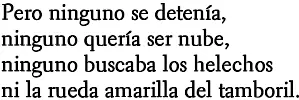


ODE TO WALT WHITMAN

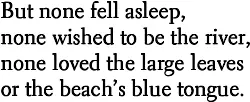

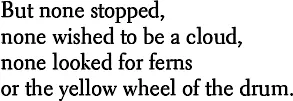



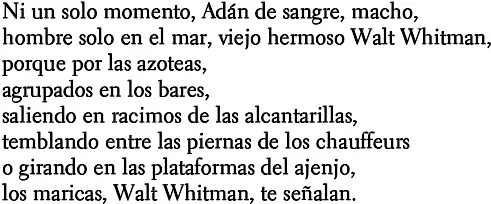
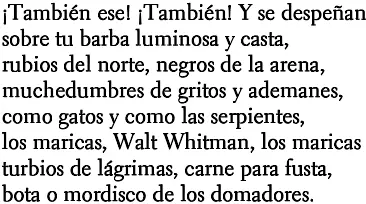
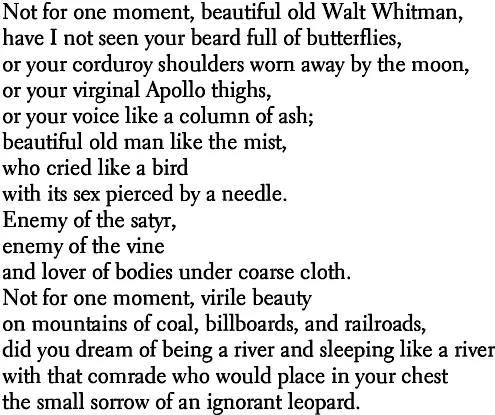
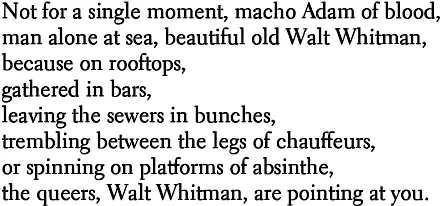

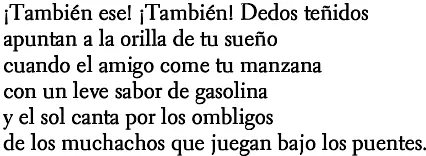



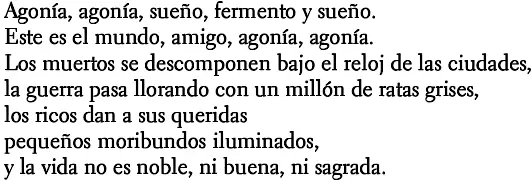

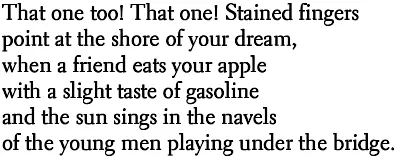



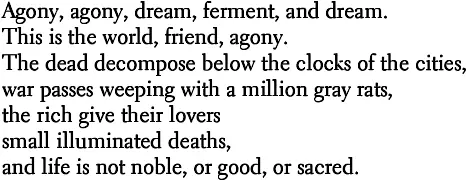

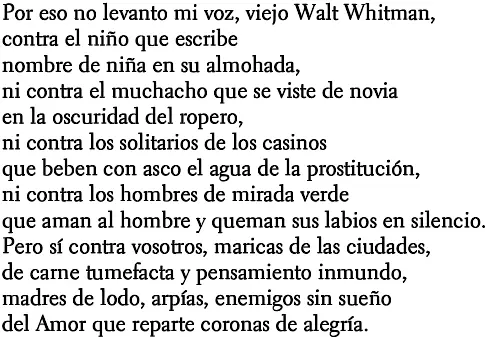
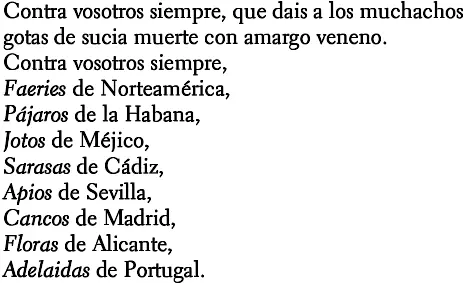



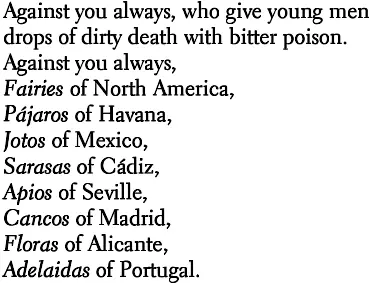



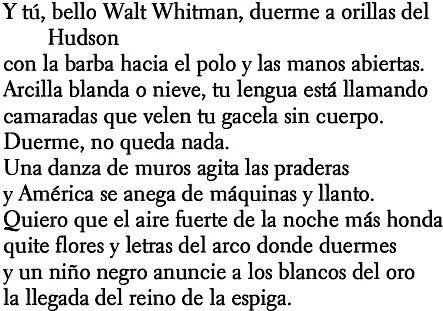

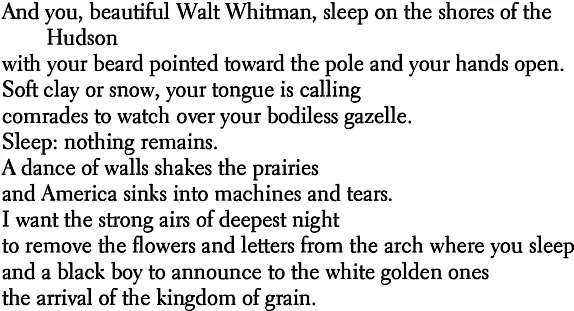
ix
Huida de Nueva York
Dos valses hacia la civilizacion
IX
Flight from New York
Two Waltzes Toward Civilization




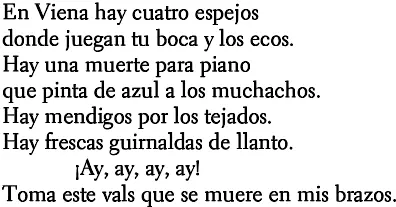
SMALL VIENNESE WALTZ




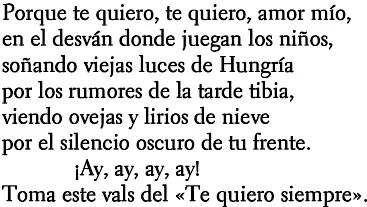
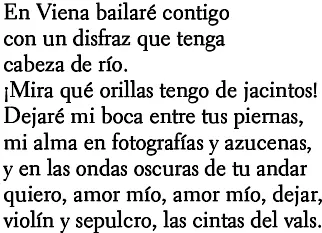

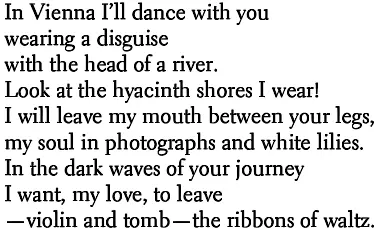
VALS EN LAS RAMAS
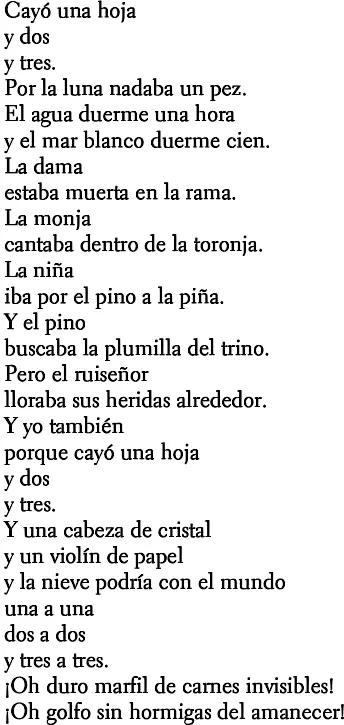
WALTZ IN THE BRANCHES
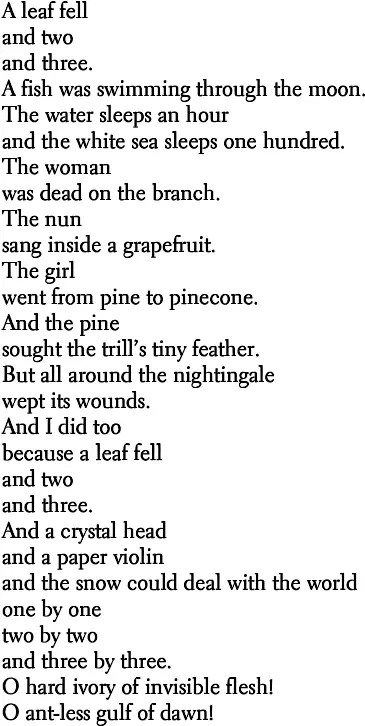
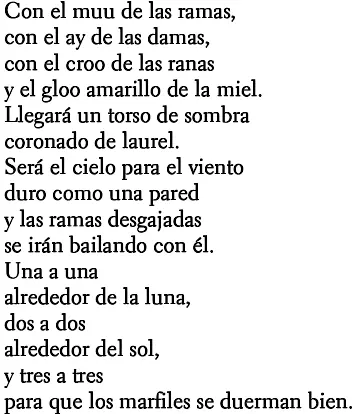
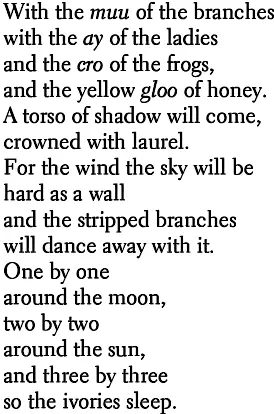
x
El Poeta llega a la Habana
A don Fernando Ortiz
X
The Poet Arrives in Havana
To Don Fernando Ortiz
SON DE NEGROS EN CUBA
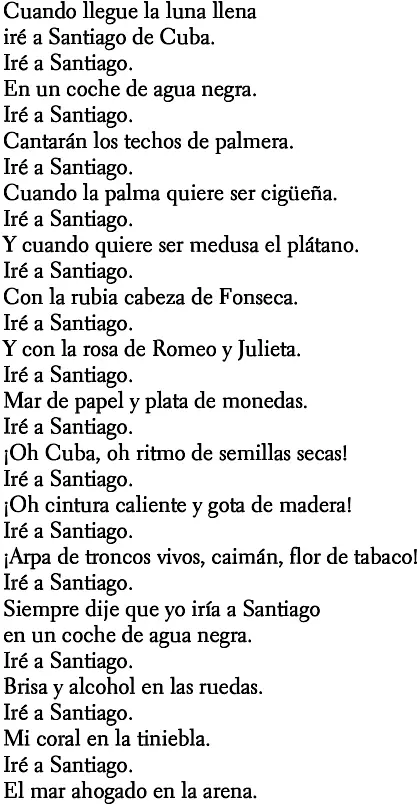
SON OF BLACKS IN CUBA
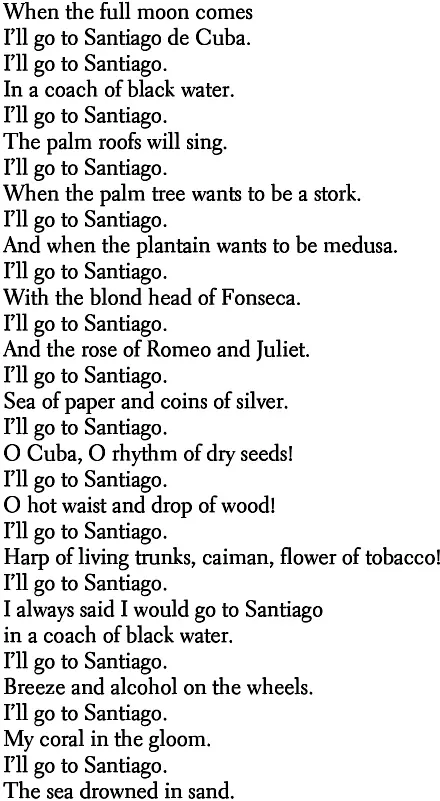
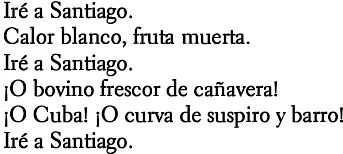

Acknowledgments
As translators, we wish to thank los herederos of Federico Garcia
Lorca for their generosity. Elaine Markson, our agent, and Gary
Johnson, her assistant, provided invaluable encouragement and
expertise. Elisabeth Schmitz and Grove/Atlantic showed unwavering faith in the project from the very beginning. We are grateful for the support of of our colleagues at Eugene Lang College,
The New School for Liberal Arts, and the University of Nevada,
Las Vegas. Beth Vogel, Katherine Koch, Karen Koch, Pablo
Medina, Sr., and Ron Padgett read parts of the manuscript and
offered helpful and timely suggestions. Also helpful was Edward
Hirsch, who wrote the Foreword. The Black Mountain Institute
provided invaluable administrative support. The Virginia Center
for the Creative Arts provided a residency for Mark Statman. We
are also grateful to the members and staff of the Association of Writers and Writing Programs for their interest and their response to
this project.
1 comment